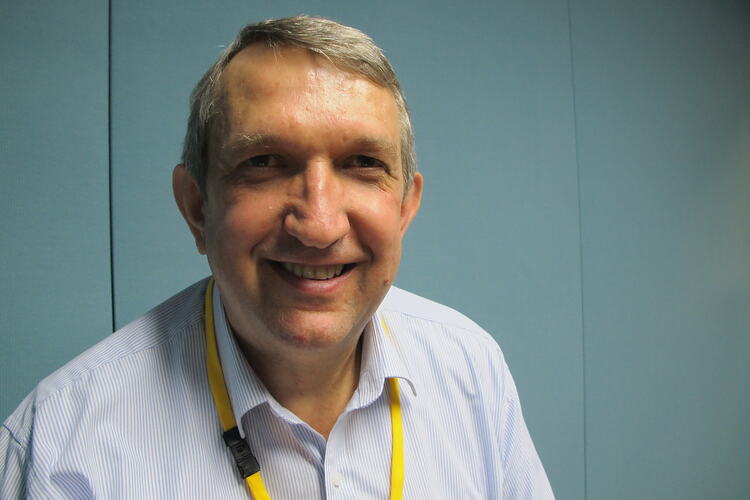Summary
Murray Walton had a background as a chartered accountant with senior financial management experience when he joined Kodak New Zealand as Financial Controller in 1994. He ended his time with Kodak as Managing Director in 2009.
Murray Walton, Kodak Australasia Pty Ltd: From Accountant to Managing Director 1994 - 2009
Kodak New Zealand
Murray Walton was a relative late-comer to Kodak. He had a background as a chartered accountant with senior financial management experience when he joined Kodak New Zealand as Financial Controller in 1994. Kodak New Zealand was a much smaller company than Kodak Australasia, having no manufacturing and a small local market in imported Kodak products.
It was usual Kodak practice for potential senior managers to spend a few years gaining experience working with the parent company Eastman Kodak. To this end, Murray was sent to Singapore in early 1998 as Regional Process Planning Manager, working on the implementation of a new computer system. At the end of 1998 he returned to New Zealand as Managing Director. Murray describes the relationship between Kodak Australasia and Kodak New Zealand as 'very close, particularly in the finance function'.
We would go to conferences together, so we would go to Rochester in New York together, the Australians and the Kiwis, and you know, we really were part of the same team.
Moving to Australia
In 2003 Murray was asked to move to Sydney to run Kodak Australasia's retail group. At the time Kodak owned about 160 retail stores throughout Australia in addition to the 800 stores run by Kodak Express licensees. He found the business 'struggling a bit'. The impact of digital photography was being felt in the decline in film processing and this was reflected in the retail business. So Murray made some necessary changes, including closing some of Kodak's stores and moving the group's administration from Sydney to Coburg.
When Eastman Kodak decided to close the Coburg plant at the end of 2004, Murray was Chief Financial Officer. On the day the news of the closure was broken to all Kodak employees simultaneously, Murray's job was to address all of the administrative staff. He recalls:
'I had to tell them that, "Well, I expect that fifty percent of you will not have a job." So we had two hundred people, and I was expecting that a hundred of them would have to go, just in the administration group. So it was a pretty tough day.'
In 2005 Eastman Kodak in Rochester made the decision to close all of Kodak Australasia's shops. Murray argued in vain that the retail business was still making a small profit, and, more importantly, that it was necessary to promote sales of Kodak's manufactured goods, especially film.
'And my argument was that this is such an important piece of the retail photographic business in Australia, for us to give up control of it, we're ultimately going to shoot ourselves in the foot and we're going to see our business deteriorate. And we saw what happened. We pulled out and Fuji went from a share of thirty percent to a share of fifty percent to ultimately taking the majority of the business.'
Murray remembers that he had the responsibility of closing or selling 125 Kodak shops, a number of which were bought by Kodak Express operators. The company organised redundancy packages for over four hundred retail staff who lost their jobs, some of whom were employed by new owners of some of the shops.
At the end of 2005 Murray was given the additional job of Regional Finance Director for Consumer Business in the Asia Pacific as an employee of Eastman Kodak. He commuted fortnightly between his two jobs in Melbourne and Singapore.
Managing Director
This 'double hatting' continued after Murray was appointed Managing Director of Kodak Australasia in 2007. Murray commented that the Managing Director role had become that of a figure-head and was not particularly onerous in terms of workload:
'... because we had business unit managers running the businesses. I was the CFO for the region, so really it was bringing all the teams together. I would have a management meeting once a month to talk about the financial side. Any messages that Rochester wanted to send to the staff, I would present those. But it wasn't a tough job from the perspective of the amount of work involved, but it was tough in that we were constantly talking about downsizing and having to make tough decisions.'
In 2009 it was Murray's turn to be made redundant. He was subsequently recruited as Chief Financial Officer for a small multi-national education company, where his experience in cost control gained at Kodak has been useful.
References
Beale, Nigel, 'The History of Kodak in Australia', 1983 (unpublished manuscript).
HT 36987 - Interview with Murray Walton, interviewed by Lesley Alves 23 April 2014.
More Information
-
Keywords
Manufacturing, Photographic Products, Biographies, Managers, Accounting
-
Authors
-
Article types
